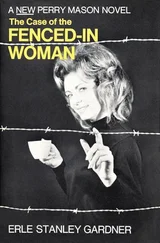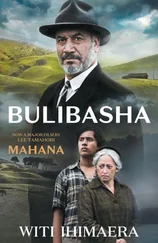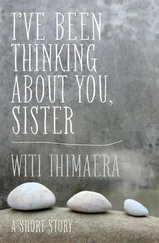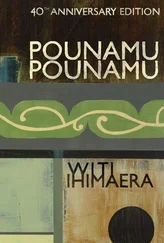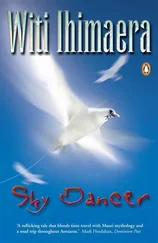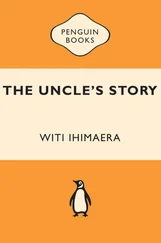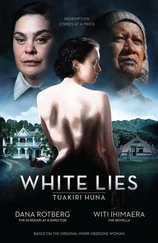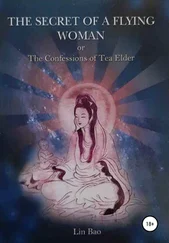Erenora embraced her sister. ‘Our husbands are brothers-in-law and loyal and loving friends,’ she answered. ‘They will protect each other.’
‘And who will protect us? ’ Ripeka asked. Like Meri, she was looking for someone to blame for Paora’s imprisonment.
‘We will protect each other,’ Erenora replied.
And still Te Whiti would not bow down.
The next morning at Parihaka he said to the ploughmen, ‘Go, put your hands to the plough, look not back. If any come with guns and swords, be not afraid. If they smite you, smite not in return. If they rend you, be not discouraged — another will take up the good work.’
It was from that moment that the wearing of three white feathers in the hair was widely adopted as a symbol of honour and remembrance for the men sent to prison. When some Pakeha saw the feathers, they were reminded of the three plumes of Bohemia and thought that they may have referred to the days when Riemenschneider was at Warea.
No, the feathers had biblical and Maori inspiration: Glory to God, peace on earth and goodwill to all men. Thus, with God at their shoulders and peace and goodwill within them, the ploughmen, straight away, went back on the job.
And from that time can be dated this fact: all men who were subsequently arrested were gaoled without trial.
CHAPTER TEN
Te Paremata o te Pakeha
Aue, I now have to go behind the scenes of Erenora’s story for a little bit.
This is the problem with history. You think it’s one narrative but most often it’s three or four or more, all like a twisted rope, tangled and knotted. But Maori have always known this about history anyway. Look at the way we korero in the meeting house. The talk goes all over the place — backwards, forwards, sideways and circling on itself.
In particular, I have to take you away from Taranaki to Wellington and to the New Zealand Parliament, Pharaoh’s Te Paremata o te Pakeha.
Why? From the time the Pakeha gained the upper hand in Aotearoa, the fate of all Maori throughout history has been decided there in that Valley of the Kings, presided over by Pharaoh’s palace, temples, library, stelae and other memorials and, crouching nearby, his judicial sphinx: the High Court. It was therefore at Te Paremata o te Pakeha, in 1880, that the fate of the Parihaka ploughmen was also decided.
Now, what’s interesting is that Parliament had actually tried to create a voice for Maori by establishing four Maori seats in 1867, albeit, initially, as an experiment for one term only. The seats were the government’s way of fulfilling the third clause of the Treaty of Waitangi — that is, giving Maori the rights of British subjects. During the 1870s and 1880s the Maori parliamentarians included Wiremu Parata, Ihaia Tainui, Hori Kerei Taiaroa, Henare Tomoana, Hone Mohi Tawhai and Wiremu Maipapa Te Wheoro, the Member for Western Maori. Laudable as that was, how much real power did the Maori parliamentarians have? Well, Parliament comprised 88 seats. It refused to give Maori a just proportion of seats based on the value of their communal property rights because then Maori would have dominated.
No wonder Parliament was able to push through legislation about Maori virtually unopposed.
There were three main legal positions Parliament had to address about Parihaka.
First, what was the status of Taranaki land: who owned what and where it was confiscated, what had been the instruments enforcing the confiscations? Second, given these questions, was the government legally entitled to send in surveyors? Third, if it wasn’t, shouldn’t the ploughmen sent to prison be released?
Rest assured there’s ample evidence that the Maori members of Parliament actively tried to resolve the Parihaka problem. They are often maligned today as Uncle Toms or as ineffective but, supported by Maori chiefs throughout Aotearoa, they continued to call for the surveys to be halted. And of course they were not lacking some support from their parliamentary colleagues: some members, acting on their consciences, also protested the process by which the ploughmen had been sentenced.
Then the Maori members and chiefs threatened to test the government’s right to confiscate by taking it to Pharaoh’s own Supreme Court and, if necessary, all the way to Queen Victoria in London.
Parliament quickly moved to stop that kind of legal action. Sir John Hall had taken over from Sir George Grey as eleventh premier of New Zealand on 8 October 1879. He had in his Cabinet Harry Atkinson, as an all-powerful Minister of Finance, and John Bryce — two men who, as has already been demonstrated, lost no sleep over Maori. It was Bryce who now, as Minister of Native Affairs, resolved the third big legal position by introducing the infamous Maori Prisoners’ Trial Act. Not only could prisoners be sent to prison without trial, they could have their trials postponed indefinitely .
Although objections increased in Parliament about denial of justice, conflict with the principles of Magna Carta and suspension of habeas corpus, nothing could overturn the government’s view that such a bill was required to deal with the threat of Te Whiti and Tohu. And after all, were Maori really British subjects?
Then, to deal with the first question, Bryce also introduced the Confiscated Lands Inquiry, which would investigate Maori grievances over confiscated Taranaki land. There was an added sting, however — to keep the Maori prisoners under lock and key, the Act declared that it was ‘indispensable for the peace and safety of the colony that the ordinary course of law should be suspended, and [the trials] should take place under special legislation’.
Pharaoh was harsh, keeping the Children of Israel enslaved unto him forever.
Even so, Horitana, when he heard the news in his Wellington prison cell, was able to send a message to Erenora.
‘My darling,’ he wrote, ‘although the prisoners’ chances of any early justice are bad, the overriding news about the Confiscated Lands Inquiry is good. I urge you to attend the first meeting of the commissioners in Hawera on 11 February. Let me know the outcome of their findings. The fate of the land is more important than my own. I am in God’s hands.’
Horitana mistakenly assumed that the inquiry would happen quickly. He also expected it to be fair — but let’s face it, how could Maori obtain such a hearing? Wouldn’t you expect the commission, for instance, to go to Parihaka to talk to Te Whiti and Tohu? They were invited to do so but did they take up the offer? No.
I like the way Rachel Buchanan describes the nature of the hearings:
The commission was working in one kind of reality, Parihaka in another. In one of its three reports, the commission said: ‘As on the Plains, even more so certainly at the doors of Parihaka, the establishment of English homesteads and the fencing and cultivation of the land, will be a guarantee of peace.’ [14] Buchanan, Parihaka Album , p. 44. The quotation cites an opinion in the third and final report of the commission, 4 August 1880.
Dream on, commissioners!
As Horitana had requested, Erenora attended the first hearing. She realised with dismay that the sun would rise and set many times before any outcome would be known.
Even worse, Bryce was apparently not planning to wait for the commission to complete its hearings. Confident of sanction, the Armed Constabulary began crossing the Waingongoro River to ensure that the surveying and the associated business of roadmaking would proceed. More ominously, the constabulary were actively rebuilding the old beach road, digging trenches and adding blockhouses and a watchtower. By April 1880, as Buchanan describes it, 600 armed police and labourers were on the job. They had a camp and stockade south of the village and another to the north. The intention, so Bryce said, was to link Hawera to New Plymouth, but why then the fortifications?
Читать дальше

